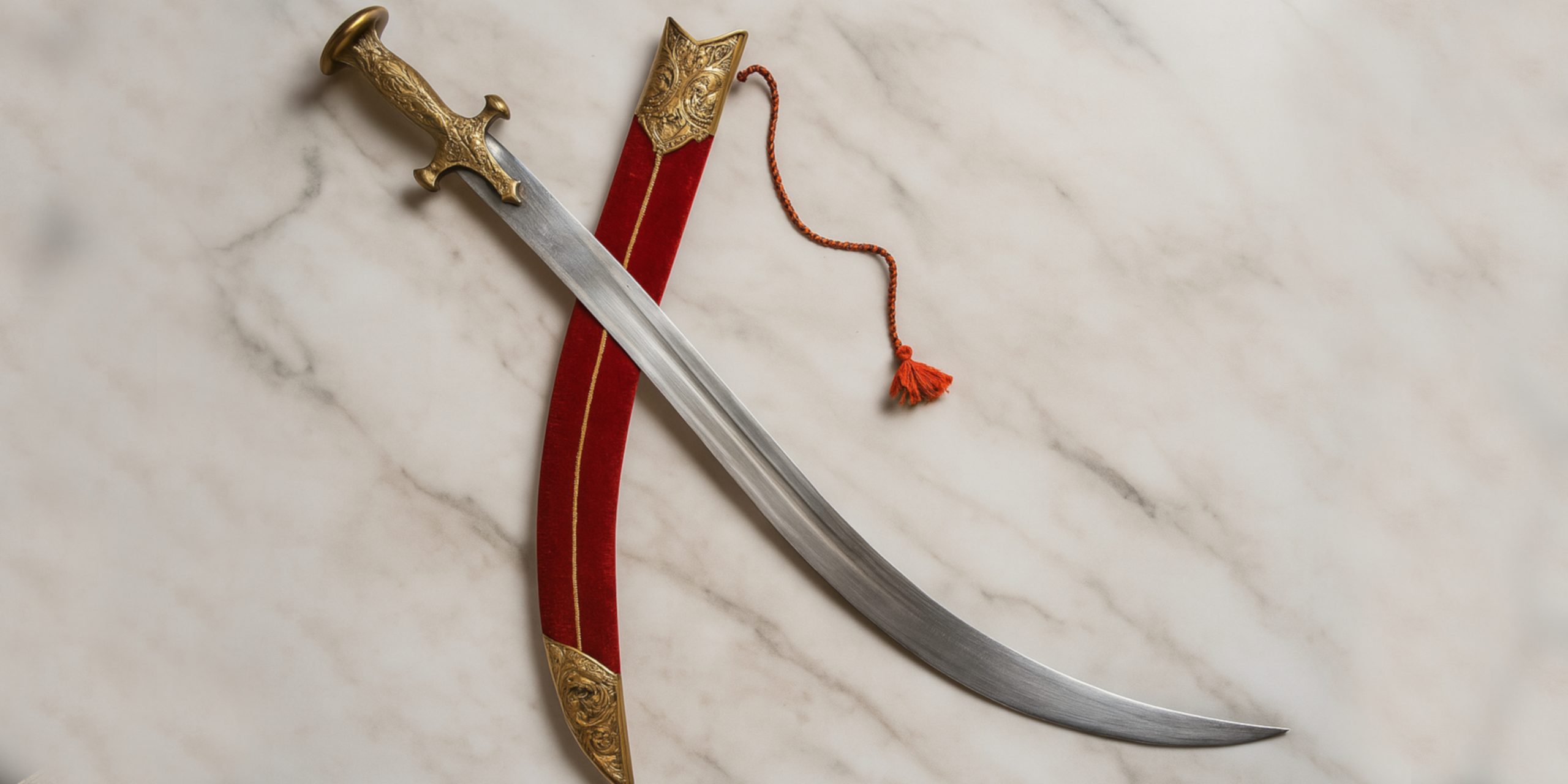
The term “dhaal sword” is often misunderstood due to the overlapping use of dhaal (meaning shield in several South Asian languages) and sword-related terminology in historical weapon collections. While dhaal itself refers to the shield, there exist hybrid or misattributed weapons where the name ‘dhaal sword’ has been used in collector circles and regional references. In rare cases, it has described weapons integrating a shield-like guard or used alongside a dhaal in coordinated combat styles. This article focuses on such composite or companion weapons seen in the Indian subcontinent, particularly those designed for dual use in parrying and striking.
Specification
| Feature | Description |
|---|---|
| Blade type | Curved single-edged, occasionally straight |
| Blade length | Typically 20 to 30 inches |
| Hilt design | Indian talwar-style grip or reinforced guard |
| Guard | Some versions incorporate an extended knuckle bow |
| Material | High-carbon steel or wootz steel |
| Associated item | Paired with a dhaal (round shield) |
| Weight | Approx. 1.2 to 1.8 kg |
History and Evolution
The origins of the so-called dhaal sword lie not in a distinct category of weaponry but in martial practices where the sword was paired with a dhaal. In Mughal and Rajput combat traditions, soldiers trained in the use of both sword and shield simultaneously, often treating the shield not as a passive defence but as an active weapon.
Some regional smiths in the 17th to 19th centuries began modifying talwar hilts or creating broader guards to facilitate closer integration with parrying techniques. Occasionally, sword hilts were reinforced or reshaped to simulate the hand-covering aspects of a shield. While not common, certain examples from Rajasthan, Sindh, and Punjab exhibit these transitional features.
In some British-era cataloguing, weapons were ambiguously labelled, leading to confusion between swords with dhaal-like features and the more general talwar or sosun pattah.
Advantages and Disadvantages
Advantages:
- Designed for paired use with a dhaal, enhancing defensive capabilities
- Certain models allow for quicker wrist movements due to compact curvature
- Some versions with knuckle guards or broadened hilts offer added hand protection
Disadvantages:
- Not a standardised weapon, leading to inconsistency in form and function
- Lack of reach compared to longer sabres or khanda-style swords
- Shield integration limits adaptability in open combat without proper training
Comparison with Similar Weapons
| Weapon | Key Differences Compared to Dhaal Sword |
|---|---|
| Talwar | More standardised and widespread; lacks shield integration |
| Khanda | Double-edged and straight; suited for powerful strikes |
| Shamsheer | More curved and used in Persian styles; lighter and faster |
| Sosun Pattah | Broader blade; more chopping power but less versatile |
Legacy
While not widely recognised as a standalone weapon type, the dhaal sword concept reflects the deeply integrated martial philosophy of the Indian subcontinent. The coordination between shield and blade in battle formed the backbone of infantry training in many princely states. Today, the occasional appearance of hybrid weapons in museums or private collections hints at a period of experimentation and regional adaptation in South Asian arms history.
Where to See
- Royal Armouries, Leeds: Indian weaponry section includes talwars and companion shields
- Lahore Museum, Pakistan: Some 18th-century examples of shield-and-sword pairings
- National Museum, New Delhi: Arms and Armour Gallery, showcasing talwar-dhaal combinations
- Metropolitan Museum of Art, New York: Has several Mughal swords with broad guards
Collector’s Guide
Collecting Notes:
- Verify provenance; many ‘dhaal swords’ are simply mislabelled talwars
- Look for features like reinforced knuckle guards or hilt extensions
- Blade patterning (damascus or wootz) greatly increases value
- Intact companion shield can double the value when displayed together
Auction Prices (Recent Examples):
| Item Description | Auction House | Price (GBP) |
|---|---|---|
| Talwar with reinforced guard (19th c) | Bonhams | £1,800 |
| Mughal-era sword with companion dhaal | Christie’s | £4,200 |
| Rajput-style short sword with shield motifs | Czerny’s, Italy | £950 |
| Shield-sword pairing with gold inlay | Private Sale | £5,000+ |
This weapon remains something of a collector’s curiosity, blending traditional martial practice with artistic and functional experimentation. Though not common in battlefield reports or manuals, its occasional presence in armouries and auction houses reflects the layered complexity of Indian arms heritage.



